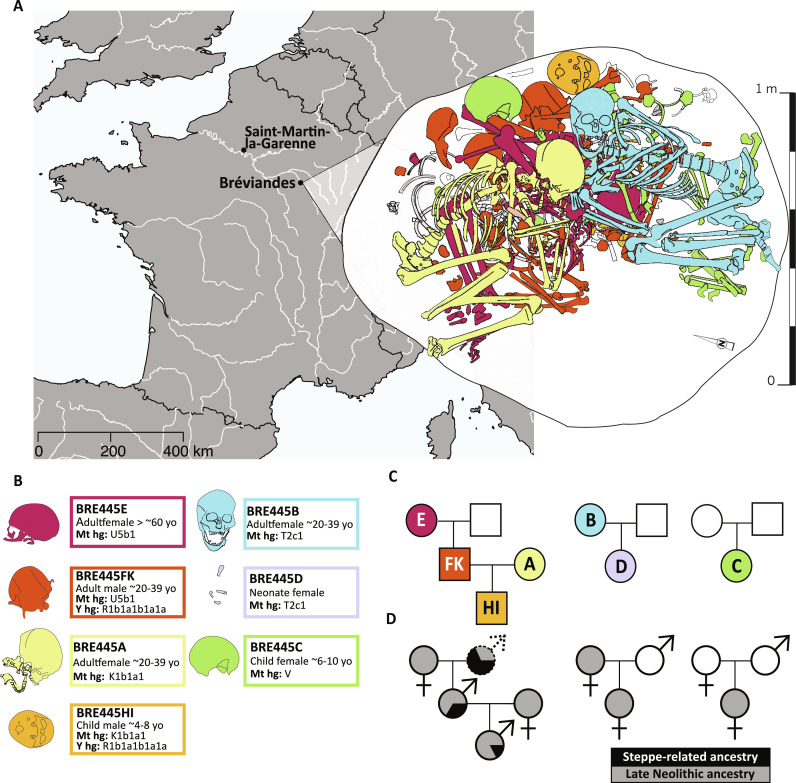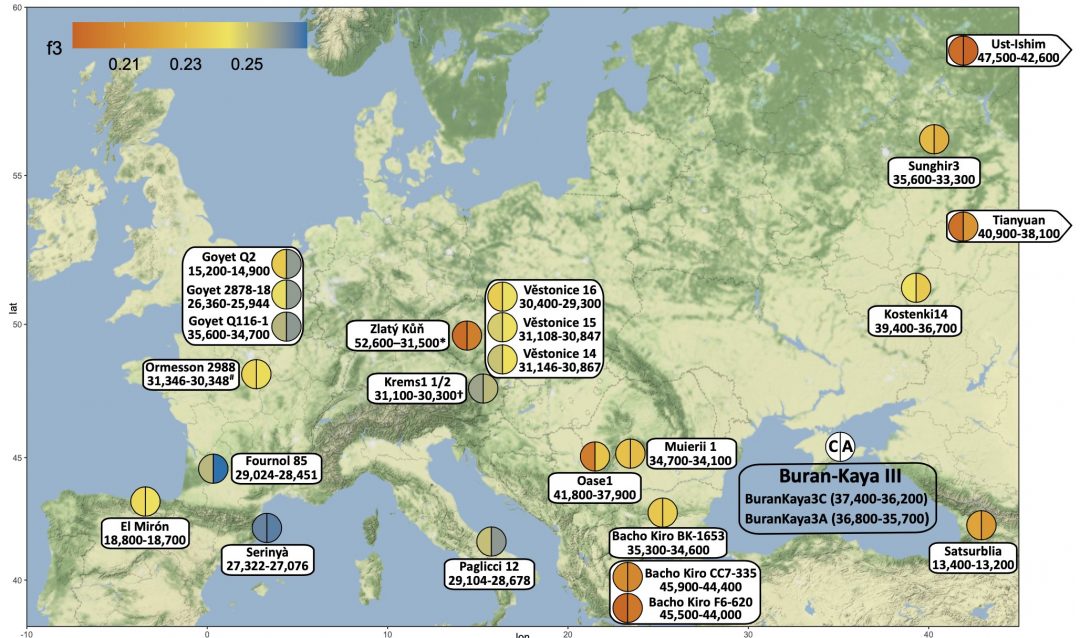The third millennium BCE was a pivotal period of profound cultural and genomic transformations in Europe associated with migrations from the Pontic-Caspian steppe, which shaped the ancestry patterns in the present-day European genome. A team of researchers including members of the NEOMATRIX network performed a high-resolution whole-genome analysis including haplotype phasing of seven individuals of a collective burial from ~2500 cal BCE and of a Bell Beaker individual from ~2300 cal BCE in the Paris Basin in France. The collective burial revealed the arrival in real time of steppe ancestry in France. The team reconstructed the genome of an unsampled individual through its relatives’ genomes, enabling them to shed light on the early-stage admixture patterns, dynamics, and propagation of steppe ancestry in Late Neolithic Europe. They identified two major Neolithic/steppe-related ancestry admixture pulses around 3000/2900 BCE and 2600 BCE. These pulses suggest different population expansion dynamics with striking links to the Corded Ware and Bell Beaker cultural complexes.
The article was authored by Oğuzhan Parasayan, Christophe Laurelut, Christine Bôle, Lola Bonnabel, Alois Corona, Cynthia Domenech-Jaulneau, Cécile Paresys, Isabelle Richard, Thierry Grange, Eva-Maria Geigl.




